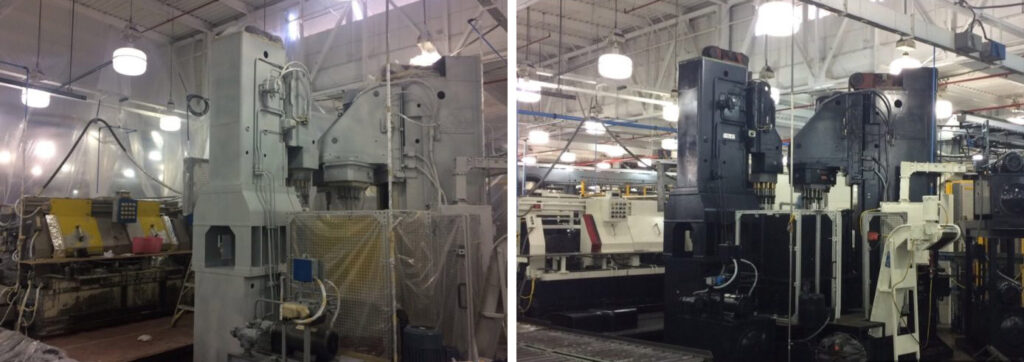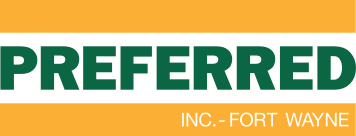What Is Being Painted?
PART 3
Clear priorities early in the project will help you save money and select the right contractor for the job at hand.
Your budget and operational requirements dictate what should get painted and when. Whether you’re painting for aesthetics or performance, some areas are going to be more important than others.
A full inspection of your facility is an essential first step to planning out your project.
Luckily, there are some guidelines to help you recognize urgent priorities.
We’ve broken things down here using the Rule of Threes:
- Three things you should always paint first when given the option.
- Three things you should paint whenever budget and time allow it.
- Three things you should never paint.

The Most Vital Things to Paint in Any Industrial Painting Project
- Start With Rust - Rust on steel components is a sure sign that painting is needed as soon as possible. Painting can extend the life of many pieces of equipment, especially tanks. Untreated rust can lead to serious business disruption and major replacement costs in the future.
- Examine Equipment Exposed to Steam or Acid - Whenever you have a new process that involves steam or acid, keep a close eye on nearby surfaces – particularly the ceiling. Often, companies will bring anodizing in-house and discover that their anodizing lines produce more wear than anticipated.
- Refresh Your Walls and Ceilings - Your walls make up the first impression of customers, new employees, executives, and others who contribute to your success. Once anything that might cause equipment damage is taken care of, walls and ceilings should be the next thing on your list.
What’s the easiest way to sort out essential painting tasks from non-vital ones? It’s simple.
Always ask yourself: “Do I have any structures at risk of rusting? Is there potential for rust in the future?”
Whenever the answer is yes, you’ve uncovered a leading priority for your paint project.
Other Elements to Incorporate into Your Plan
- Address Possible Customer Concerns - If they feel your facility isn’t up to their standards, customers will balk. When customers have limited knowledge about manufacturing, their assessment usually relies on aesthetics. This is why ceilings and walls along customer tour routes should always be given special attention.
- Consider Updating Safety Painting - Firefighters appreciate industrial facilities with color-coded pipes – and in an emergency, this can save precious moments. Other areas to look at include safety painting at crosswalks, high-traffic areas, and especially hazardous parts of your plant.
- Don’t Forget About Regulatory Compliance - Regulatory compliance remains a major cost for many manufacturers. Make sure compliance experts are included in your planning so any requirements can be incorporated. In some industries, even chipped paint can lead to sanctions.
What Items Should Never Be Painted?
- Stainless Steel - Stainless steel is meant to be maintenance-free. It is designed not to be painted, though, it does happen when need requires, such as waterproofing and coating. But it is rare, and not an initial measure. If you notice corrosion or rust on an appliance that’s intended to be stainless steel, you have a whole different problem on your hands – take it up with your OEM!
- Galvanized Metal - Galvanized steel and iron contain a protective zinc coating that prevents the development of rust. Thanks to the coating, galvanized metal resists the adhesion of most paints. While painting galvanized metal is sometimes possible, it is not necessary. On top of that, it adds a lot of cost and complexity.
- Anything Not Intended to Be Painted - When in doubt, it is always best to ask the experts – whether your equipment manufacturer or painting vendor. As with galvanized metal, there are many items that could be painted, but it is still a bad idea. And, of course, there are cases where painting could cause equipment failure.
Is There A Right Time Of Year For Painting?
Generally speaking, the best time to schedule your painting project is when it will meet your needs. If you have a seasonal schedule that dictates your workforce or how your facilities are used, then picking a time frame that will produce minimal disruption is a good idea.
In all other situations, it depends on the nature of your project.
- Indoor Projects: Indoor projects can be handled at any time, regardless of the weather or temperature outside. Be aware, though, that some treatments and paints require sustained indoor temperatures within a certain range, so they will adhere and set properly. Be sure to consult with your contractor about monitoring your indoor climate.
- Outdoor Projects: Outside projects are “weather permitting”, temperate or warm weather is best. Exterior painting work can be delayed by rain, snow, and wind storms: There’s no point in applying new paint unless you can count on three days without rain!
Many industrial clients plan their paint projects around the holiday season when there are fewer employees on site. While this can be a great idea, it is also a very popular strategy, so be sure to book your project early so you have the time frame you want.
If you need advice on how to best prioritize your painting needs, then get a free painting consultation from us.
What To Paint: Right Way, Wrong Way
- Jim decides he wants to paint “everything.” The work is slow going since no clear priorities are established. Some equipment succumbs to rust and acid damage because it wasn’t treated right away. Jim’s project runs long into his firm’s busy season, adding hundreds of hours.
- Rob works with his safety and regulatory compliance teams to set clear expectations. By noting areas of rust and steel loss, he gets vital equipment treated fast, saving thousands. Since he is in the slow season, there’s time to repaint customer tour routes. This helps the company close a big contract!
Remember:
- Always start painting with areas where you’re losing steel or might in the future.
- Set clear expectations that help you protect your most valuable equipment first.
- Scheduling early lets you launch your project in a slow season, saving you time.

